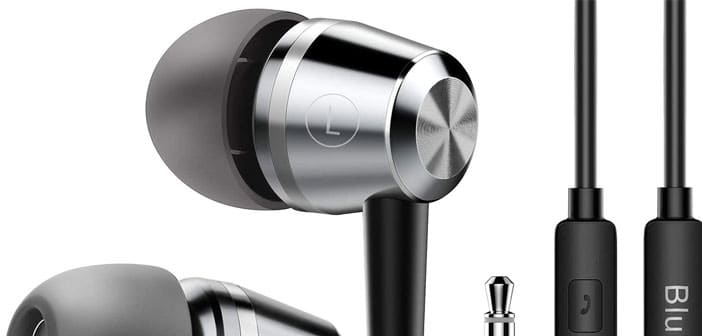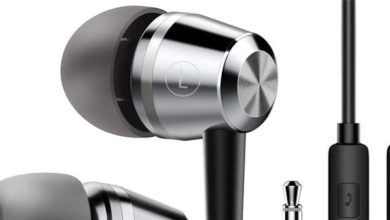
When we talk about headphones, we refer to a device equipped with transducers joined together by rigid support and equipped with padding. By earphones, on the other hand, we mean the devices that rest in the auricle, while for in-ear headphones.
We refer to devices that are introduced into the ear canal and are supported by it without support structures. They are the most used headphones in recent years because they offer several advantages, such as portability, lightness, and soundproofing.
How they are made
As you can also understand from the name, the in-ear headphones are characterized by the fact that they must insert the two earphones inside the ear. As a result, they are very light and thin and have the advantage of offering excellent sound quality, as they can cancel out external noise.
The headphones, slipping inside the ear canal, form a plug from which almost nothing filters. Instead, the in-ear headphones are wrapped in two rubber pads, which can be of different sizes (small, medium, large), made of silicone or memory foam.
Even in-ear headphones, as well as traditional headphones, can be equipped with a single or double transducer: allowing, in the latter case, stereo listening; on each transducer, there is usually the identifying indication of the L (left, left) or R (right, right) channel, to help wear it in the right ear, respecting the stereophonic perspective of the reproduction.
Advantages and Disadvantages
The earphones have a protuberance that fits inside the ear canal, effectively occupying it and blocking the entry of external noises. As a sensation, we could compare them to earplugs commonly used in the pool or for sleeping. However, due to their specific conformation, they have advantages and disadvantages. Let’s see them:
- They completely isolate the ear from the outside, and this means that the sound pressure, having no other outlet, is conveyed towards the eardrum, usually resulting in a full-bodied audio output even in the case of an audio source with a not particularly high volume, and, in the case of at the same time, particularly effective in noisy contexts such for example, public transport.
- They tire the ear due to prolonged exposure of the auditory membrane to stresses, and consequently, can lead to the risk of damage to the eardrum.
- They lead to a sound perception of a lower level (about 50 decibels) than the actual one. This phenomenon pushes the listener to increase the volume, stressing the eardrum even more. Some in-ear earphone models are equipped with small holes to allow the pressure to escape towards the outside to address this problem.
How to choose them
To understand the difference between an economic model and a high-end one and the audio performance and design, it is necessary to observe the quality of the cap lining that we place on the protuberance, which is the part that we will physically insert into the ear.
Cheap headphones usually have rubber pads that, although soft, is often uncomfortable and do not adhere perfectly to the auditory channel, leaving spaces that significantly reduce acoustic insulation and musical performance and make listening annoying due to continuous interventions. Hence, an adaptation of their position in the ear to optimize the acoustic performance.
Conclusions
Compared to traditional headphones, in-ear headphones are certainly easier to carry around and wear due to their small size and moderate weight. Think, for example, of the pleasure of listening to music while jogging or other sporting activities in the open air, but also in the gym, where lightness and safe hold are key elements.
Product prices and availability are subject to change. Any price and availablility information displayed on Amazon at the time of purchase will apply to the purchase of any products.
